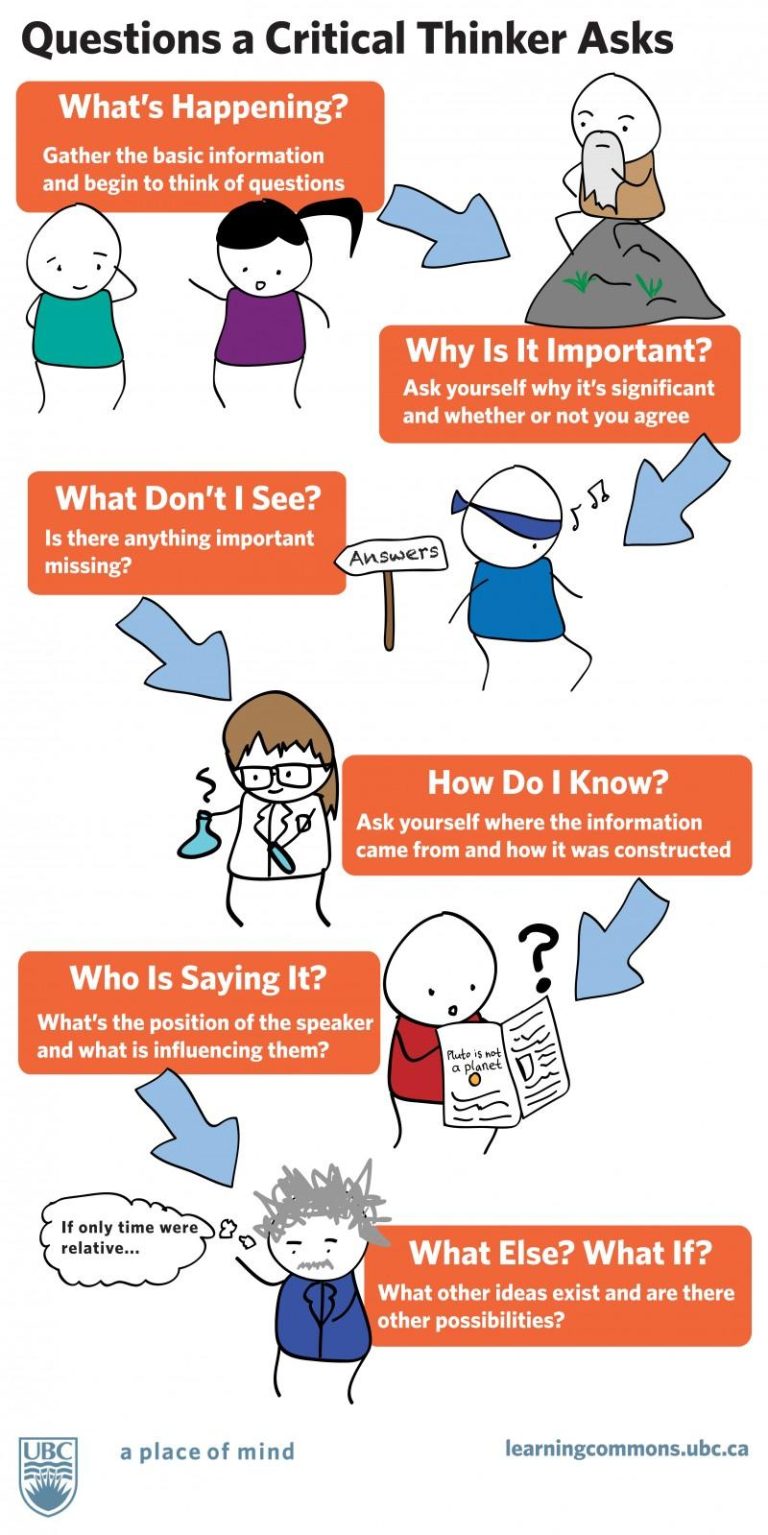Building Critical Thinkers: Strategic Activities for Homeschoolers

Welcome to the world of homeschooling, where every day is a new adventure filled with opportunities for learning and growth. As a parent-turned-teacher, you have the unique privilege and challenge of nurturing young minds to think critically and solve problems like never before. So grab your trusty ruler and sharpen your pencils, because we’re about to dive into some strategic activities that will transform your little ones into mighty critical thinkers. Get ready to laugh, learn, and maybe even question your own logic along the way. Let the homeschooling games begin!
Key Strategies for Cultivating Critical Thinking Skills
So you want to cultivate your critical thinking skills, eh? Well, look no further because I’ve got the key strategies that will have you thinking more critically than a detective solving a murder mystery.
First things first, you gotta question everything. I’m talking about everything from why the sky is blue to why your roommate insists on leaving dirty dishes in the sink for days on end. Don’t just accept things at face value – dig deeper, ask why, and challenge assumptions like your life depends on it.
Next up, you gotta embrace the power of perspective. Put yourself in someone else’s shoes and see things from a different point of view. It’s like playing dress-up but with ideas. By understanding different perspectives, you’ll be able to approach problems from all angles and come up with more creative solutions.
And last but certainly not least, don’t be afraid to make mistakes. Critical thinking is all about trial and error, so don’t sweat it if you don’t get it right the first time. Learn from your mistakes, adjust your thinking, and keep pushing yourself to think more critically every day.

Incorporating Socratic Questioning Techniques into Daily Lessons
Are your students tired of the same old boring lectures? Do you want to spice up your daily lessons with a little bit of fun and critical thinking? Incorporating Socratic Questioning Techniques is the way to go! Socrates himself would be proud of the way you engage your students in meaningful discussions and debates.
Here are some tips and tricks to help you seamlessly integrate Socratic Questioning into your daily lessons:
- Start by asking open-ended questions that require more than a simple “yes” or “no” answer. Get those brain juices flowing!
- Encourage your students to think critically and logically by challenging their assumptions and beliefs. Who knew teaching could be so philosophical?
- Use the power of silence to your advantage. Give your students time to ponder their answers and truly engage in deep reflection. Awkward silences never felt so productive!
Don’t be afraid to push your students to think outside the box! Encourage them to ask their own Socratic questions and engage in lively debates with their peers. Who knows, you might just spark a love for philosophy in the next generation of thinkers and scholars.

Utilizing Real-World Problem Solving Scenarios
Have you ever found yourself in a sticky situation where you had to think on your feet and come up with a solution? Real-world problem-solving scenarios are like a game of chess – you have to strategize, adapt, and stay one step ahead of the competition (or in this case, the problem at hand). Whether you’re trying to rescue a stranded kitten from a tree or figure out how to fix a leaky faucet, these scenarios test your creativity and quick thinking.
One key to successfully navigating real-world problem-solving scenarios is to break down the problem into smaller, more manageable tasks. It’s like eating a giant pizza – you can’t just shove the whole thing in your mouth at once (unless you’re a competitive eater, in which case, more power to you). Instead, **prioritize** what needs to be addressed first and work your way through the obstacles systematically. Remember, Rome wasn’t built in a day, and neither will your problem be solved in a single moment of brilliance.
Another crucial aspect of handling real-world problems is to think outside the box. Don’t be afraid to get a little weird with your solutions. For example, if you’re stranded on a deserted island with only a rubber chicken and a bottle of hot sauce, you might think you’re doomed. But with a little creativity (and a lot of determination), you just might find a way to signal for help or craft a makeshift raft out of coconuts and palm fronds. **Innovation** is the name of the game when it comes to real-world problem-solving.
So next time you find yourself faced with a daunting challenge, don’t panic. Embrace the chaos, flex those problem-solving muscles, and remember that the world is your oyster (unless you’re allergic to shellfish, in which case, maybe pick a different metaphor). With a little ingenuity and a lot of determination, you’ll be conquering real-world problems left and right like a boss.

Encouraging Independent Research and Analysis
So you want to dive into the world of independent research and analysis, huh? Well, buckle up because it’s about to be a wild ride! Gone are the days of relying on others to spoon-feed you information. It’s time to put on your detective hat and hit the books (and the internet).
First things first, you’ll need to sharpen those research skills. Google is your best friend, but don’t forget about the treasure trove of information hidden in library databases. Dust off those library cards and get ready to sift through the dusty archives for hidden gems.
Next up, it’s time to analyze all that juicy data you’ve collected. Break out your trusty spreadsheet and start crunching those numbers. Look for patterns, outliers, and anything that jumps out at you. Who knew math could be so fun?
And remember, the key to successful research and analysis is to think critically. Don’t just accept information at face value. Question everything, challenge assumptions, and don’t be afraid to think outside the box. With a little bit of creativity and a whole lot of determination, you’ll be a research guru in no time!

Fostering a Growth Mindset and Resilience in Learning
Are you tired of feeling defeated every time you come across a challenging task? Well, buckle up because we’re about to dive into the world of !
Let’s start by embracing the fact that learning is a journey filled with ups and downs. It’s like riding a rollercoaster – sometimes you’ll feel on top of the world, while other times you’ll want to scream and throw up. But hey, that’s the thrill of it all, right?
One way to cultivate a growth mindset is by reframing your perspective on failures. Instead of seeing them as roadblocks, view them as opportunities to learn and grow. Remember, every mistake is a stepping stone towards success – or in this case, a stepping stone towards finally understanding algebra.
And when the going gets tough, it’s important to tap into your inner resilience. Think of yourself as a rubber band – you may get stretched to your breaking point, but you’ll always bounce back stronger. So, chin up, buttercup, and remember that you’re capable of overcoming any obstacle that comes your way. With a little bit of determination and a sprinkle of positivity, you’ll be unstoppable!
Implementing Debates and Discussions to Challenge Perspectives
Looking to shake things up in your usual routine of nodding along to whatever your friends say? Why not try ? Here are some tips on how to get started:
- Choose a Controversial Topic: Pick something that will really get the juices flowing. Whether it’s pineapple on pizza or the age-old debate of cats vs. dogs, make sure it’s something that people are passionate about.
- Assign Sides: Divide your group into teams and assign each side a position to argue. You’ll be amazed at how quickly people can come up with arguments for something they don’t even believe in!
- Set Ground Rules: Make sure everyone knows that it’s all in good fun and that personal attacks are off-limits. No one wants to lose a friend over a debate about whether Die Hard is a Christmas movie.
So next time you’re hanging out with your pals, why not suggest a friendly debate? Who knows, you might just learn something new or even change someone’s mind. And if not, at least you’ll have a good laugh in the process!
Integrating Creative and Analytical Thinking Exercises for Well-Rounded Development
Are you tired of feeling like your brain is stuck in either creative or analytical mode? It’s time to shake things up and integrate both sides of your brain for a well-rounded development.
One fun exercise to get those creative juices flowing is to try your hand at some improv comedy. Not only will this exercise help you think on your feet and outside the box, but it will also encourage you to let go of any inhibitions and embrace the unexpected – a valuable skill both in the creative and analytical realms. Who knows, you might discover your hidden talent for stand-up comedy!
On the flip side, analytical thinking exercises can help sharpen your problem-solving skills and attention to detail. Try tackling a Sudoku puzzle or a logic game to give your brain a workout. These exercises will not only improve your critical thinking abilities but also teach you to approach problems from multiple angles – a crucial skill for both creative and analytical endeavors.
Don’t forget to mix things up and combine both types of exercises for the ultimate brain workout. For example, try creating a piece of art using mathematical patterns or solve a complex problem using a creative storytelling approach. The possibilities are endless when you embrace the overlap between creative and analytical thinking. So go ahead, think outside the box (and maybe even draw some boxes while you’re at it)!
FAQs
Q: What are some fun activities to help develop critical thinking skills in homeschoolers?
A: Well, you could start by turning your house into an escape room and make your kids solve puzzles to find the remote control. Or maybe challenge them to a game of “20 Questions” where they have to guess what you’re thinking (spoiler alert: it’s usually bacon).
Q: How can parents encourage their homeschoolers to think critically about everyday situations?
A: Easy! Just start asking them questions like “Why do you think the cat knocks things off the table?” or “Do you really need that many unicorn stickers on your notebook?” It’s all about getting them to analyze and question the world around them.
Q: Are there any online resources or apps that can help homeschoolers build their critical thinking skills?
A: Absolutely! There are tons of brain-teasing apps like BrainPOP and Khan Academy that can challenge your kids to think outside the box. Or you could just have them try to navigate the confusing world of TikTok algorithms – that’ll really test their critical thinking skills.
Q: How important is it for homeschoolers to develop strong critical thinking skills?
A: Oh, it’s super important! I mean, how else are they going to outsmart you in arguments or come up with creative excuses for why they didn’t finish their math homework on time? Critical thinking is basically their secret weapon for survival in the homeschooling jungle.
Q: What role can storytelling play in helping homeschoolers develop critical thinking skills?
A: Storytelling is like the ultimate brain workout for homeschoolers. It challenges them to think critically about plot twists, character motivations, and who the heck thought it was a good idea to let Gandalf babysit those hobbits. Plus, it’s just a fun way to spark their imagination and get those critical thinking gears turning.
Time to Put on Your Thinking Caps!
Well, congratulations! You’ve made it to the end of our guide on building critical thinkers with strategic activities for homeschoolers. Now that you’re armed with these tips and tricks, it’s time to put on your thinking caps and get to work. Remember, critical thinking isn’t just for adults – it’s a skill that can be honed and developed at any age.
So go forth, young homeschooler, and encourage your little ones to question, analyze, and think outside the box. Who knows, maybe one day they’ll be the ones teaching you a thing or two! Stay curious, stay creative, and keep those brains flexing. Happy homeschooling!






